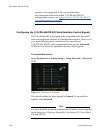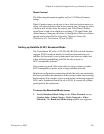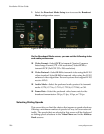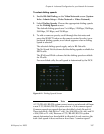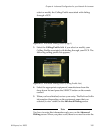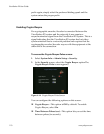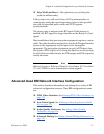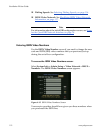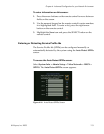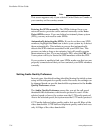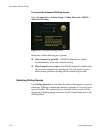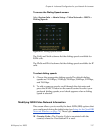
Chapter 4 - Advanced Configuration for your Network Environment
© Polycom, Inc. 2003 111
❑ Pulse Width (millisec)—This option lets you set the pulse
width (in milliseconds).
If the system is in a call, and it loses H.320 synchronization, it
continuously sends the resynchronization pulses at the specified
rate with the specified pulse width until H.320 regains
synchronization.
The resync pulse is output on the RTS signal. If this feature is
enabled, the RTS signal no longer functions as the Ready-To-Send
signal.
Most installations that use encryption equipment require a custom
cable. The cable should be designed to route the RTS signal from the
system to the appropriate resync input on the encryption
equipment. The encryption equipment can get its RTS input from
the system’s DTR output or by wiring this input to an always-high
tie-off. In this non-dialed mode, the DTR output and RTS output act
exactly the same.
Note
Refer to Integrators’ Reference Manual for ViewStation EX, ViewStation
FX, and VS4000 for more information on these signals.
Advanced Quad BRI Network Interface Configuration
This section describes information and settings for a series of BRI
advanced configuration screens. These BRI configuration screens
are:
❑ ISDN Video Numbers. See Entering ISDN Video Numbers, on
page 112.
❑ Auto Detect Speed. See Entering or Detecting Service Profile
Ids, on page 113.
❑ Audio Quality Preference. See Setting Audio Quality
Preference, on page 114.
❑ Advanced Dialing. See Setting Channel Dialing Preferences, on
page 115.




